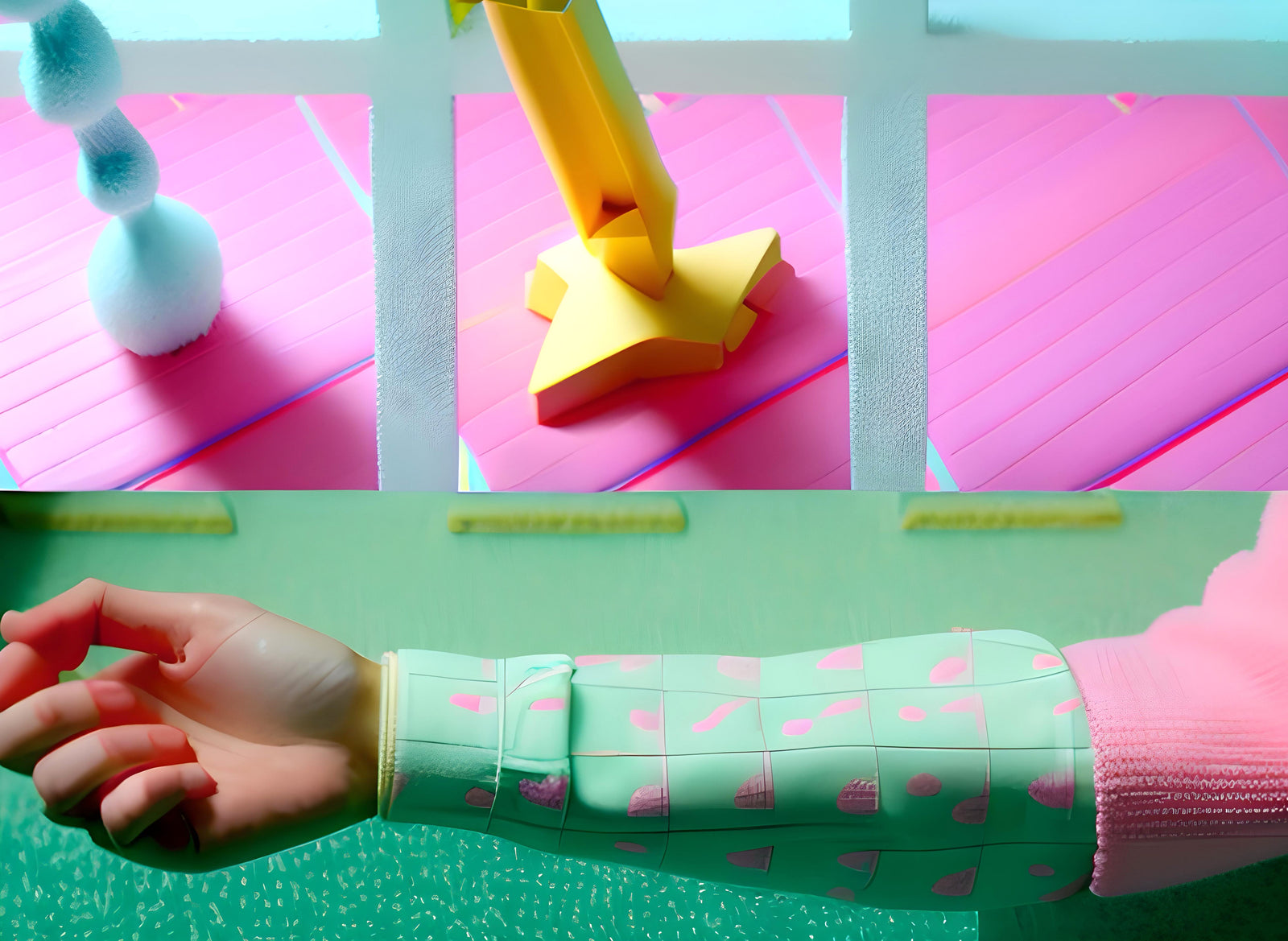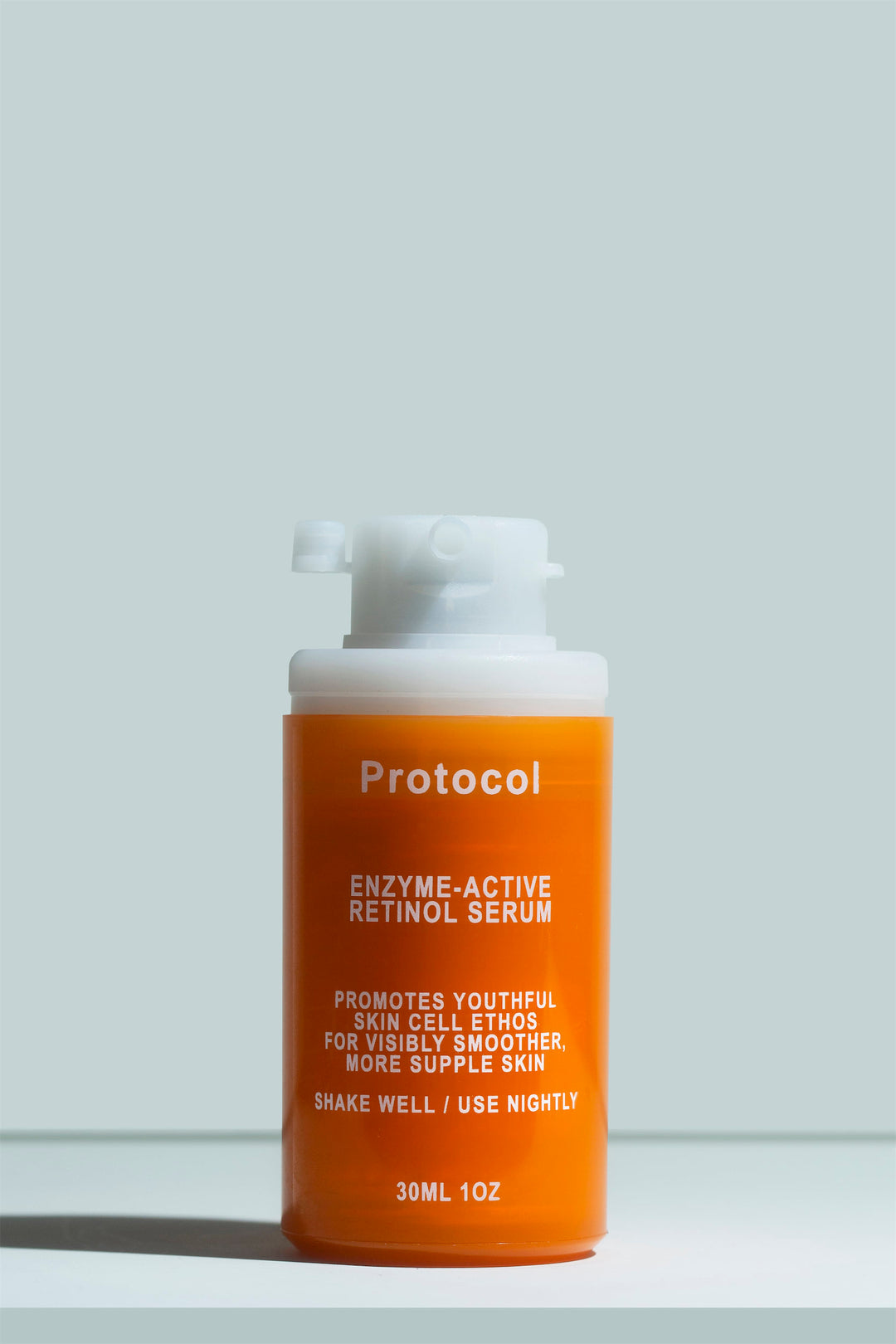How to Patch Test Your Skincare

You’ve bought an awesome new skincare product you’re excited to try. You apply it to your skin with excitement, and a few minutes, hours, or maybe even days later, your skin rebels with hives, a red rash, or a breakout. Woe of woes - this could have been avoided with a skin patch test.
Patch testing skincare allows you to test products and figure out if you’re allergic or sensitive to any of their components. Instead of reacting all over your face, testing a small area allows you to manage any adverse events more easily. In this post, you’ll learn how to patch test skincare, what a reaction looks like, and more.
What is skin patch testing in skincare?
The term “patch testing” is usually a medical one, referring to a category of allergy tests carried out by dermatologists or allergenists. In skincare, there’s a simplified version of patch testing that ensures new skincare products won’t irritate the skin or clog pores. That’s what we call a skincare patch test.
The skin patch testing process is fairly simple. You apply a product to a patch of skin for several days in a row and see what happens. If all goes well, the product is probably safe to apply to your face. If you experience signs of irritation, you know that this product isn’t for you.
How to patch test skincare for sensitivity or allergy
Here’s how to do a skin patch test, with a few additional tips depending on the product you’re testing:
- Choose your patch: Patch in an area where the skin is fairly thin. Some good locations include the back or sides of the neck, behind the ear, on the forearm, the inner area of the upper arm, or the abdomen. While you can patch test on your face, a reaction might be more frustrating to deal with.
- Apply the product: When patch testing, you’ll want to apply the product in conditions that are similar to your real-life usage. Leave-on products should stay on the skin, while cleansers and masks should be washed off. If you’re testing a moisturizer, that means you should cleanse the patch area first, ideally with your usual facial cleanser.
- Keep it going: Keep patch testing the product for several days, according to usage instructions. Moisturizers can go on twice a day, whereas if you’re testing a chemical exfoliant, you may only want to apply it once every few days. The American Academy of Dermatology recommends patch-testing new skincare for 7 to 10 days. While this is a general guideline, you might find that testing for five days is enough if your skin isn’t very sensitive.
- Pay attention: Look out for signs of irritation in your patch test area. A reaction can include a rash, redness, tenderness, or itchiness. It might occur right away, or it might take a few days to develop. If there are no reactions within a reasonable time frame, you can proceed to use the new product over larger areas.
Signs of a reaction
So how will you know if you’re reacting to a product? Here are the key symptoms of contact dermatitis, which is the kind of reaction you’ll have if you’re allergic or sensitive to a skincare product:
- Redness - it might be spread out in cases of allergic contact dermatitis, or more localized to the patch test area in cases of irritant contact dermatitis.
- Itchiness, especially in cases of allergic reactions.
- Scaling or flakiness, which may develop into crustiness or oozing if particularly severe.
- Tenderness, burning, or a stinging sensation
- Swelling or hives
When to see a doctor
If you do experience a reaction to your patch test, stop the patch testing process and forego using the product altogether. Once you stop, the reaction will likely resolve on its own within a few days. If it doesn’t, speak to your doctor about potential treatment.
It’s uncommon to have respiratory reactions to skin allergies, but if you experience a fever, trouble breathing, or throat swelling, seek medical attention immediately.
Should you patch test for acne?
If your skin is acne-prone, consider patch testing for comedogenicity. This means testing a product on an area where you normally break out, to see whether it leads to acne.
Your acne patch test should go on for at least two weeks since the timeline for breaking out from a new product can be longer compared to experiencing irritation. That said, if you know that products can break you out quickly, you can conduct a shorter patch test.
Unlike patch testing for sensitivity, patch testing for acne isn’t as easy or as telling. Breakouts are influenced by many factors, including stress, hormonal fluctuations, and the evil randomness of the universe. Plus, resurfacing products such as chemical exfoliants and retinoids can cause skin purging, an “it gets worse before it can get better” breakout.
In other words, if you break out regularly anyway, patch testing for acne might not be worthwhile at all. You won’t know if your new product is responsible for a breakout or if it’s just luck.
Which ingredients are most likely to cause reactions?
Reactions to skincare products are very individualized. What might be irritating for one person might be fine for another, which is why patch testing is so important.
Some ingredient categories are considered more likely to irritate, such as fragrances (including natural essential oils), many preservatives (especially ones that work by releasing formaldehyde), and certain surfactants. Check out our guide to skincare for sensitive skin for a product-by-product explanation and how to build a safe routine.
Consider keeping a spreadsheet with products you’ve reacted to and their ingredient lists. By cross-referencing, you can figure out the precise ingredients or blends that irritate your skin. You can also compare the ingredient lists of products that irritate your skin to ones that don’t, to rule out ingredients as potential irritants.
Websites like INCIDecoder can help you identify the ingredient categories, to narrow things down even further.
Other skin patch testing considerations
There are some questions and complications that can come up with patch testing, so here are a few things to keep in mind:
- Skin-renewing products such as retinoids and exfoliating acids can lead to irritation when they’re used too frequently, or they might cause temporary tingling. Experiment with frequency during your patch test, to figure out how often you should use them for best results.
- You can patch test multiple products at once if needed. You can apply one product on one arm and the other product on another arm, for instance.
- You can develop allergies at any time, including to products or ingredients you have used for years. This is incredibly common, and unfortunately, not something you can test for easily.
- Even after patch testing, only introduce one new product to your skin at a time. New products may interact with each other, so this gives you more controllable information.
- If you already have other active or renewing products in your routine, consider taking a break from them while you introduce any more high-powered products.
Stay safe with a patch test
A skincare patch test might not save you from an allergic reaction, but it’ll help minimize its repercussions. In a perfect world, it would be standard practice for every person and with every new skincare product. In practice, we know it’s easy to forget, especially if you change your routine often. But if you have sensitive skin or the new product you’re introducing contains any potential irritants, skin patch testing is a must.
At Protocol Lab, we make it a point to keep our product line gentle and fragrance-free but still transformative. Both our Enzyme-Active Retinol Serum and Vitamin C Superserum are preservative-free, thanks to our space-age packaging system that keeps them fresh and potent for longer. If you’d like to try Protocol Skincare, our SMOL collection comes with a 30-day supply that’s perfect for your trial run.




